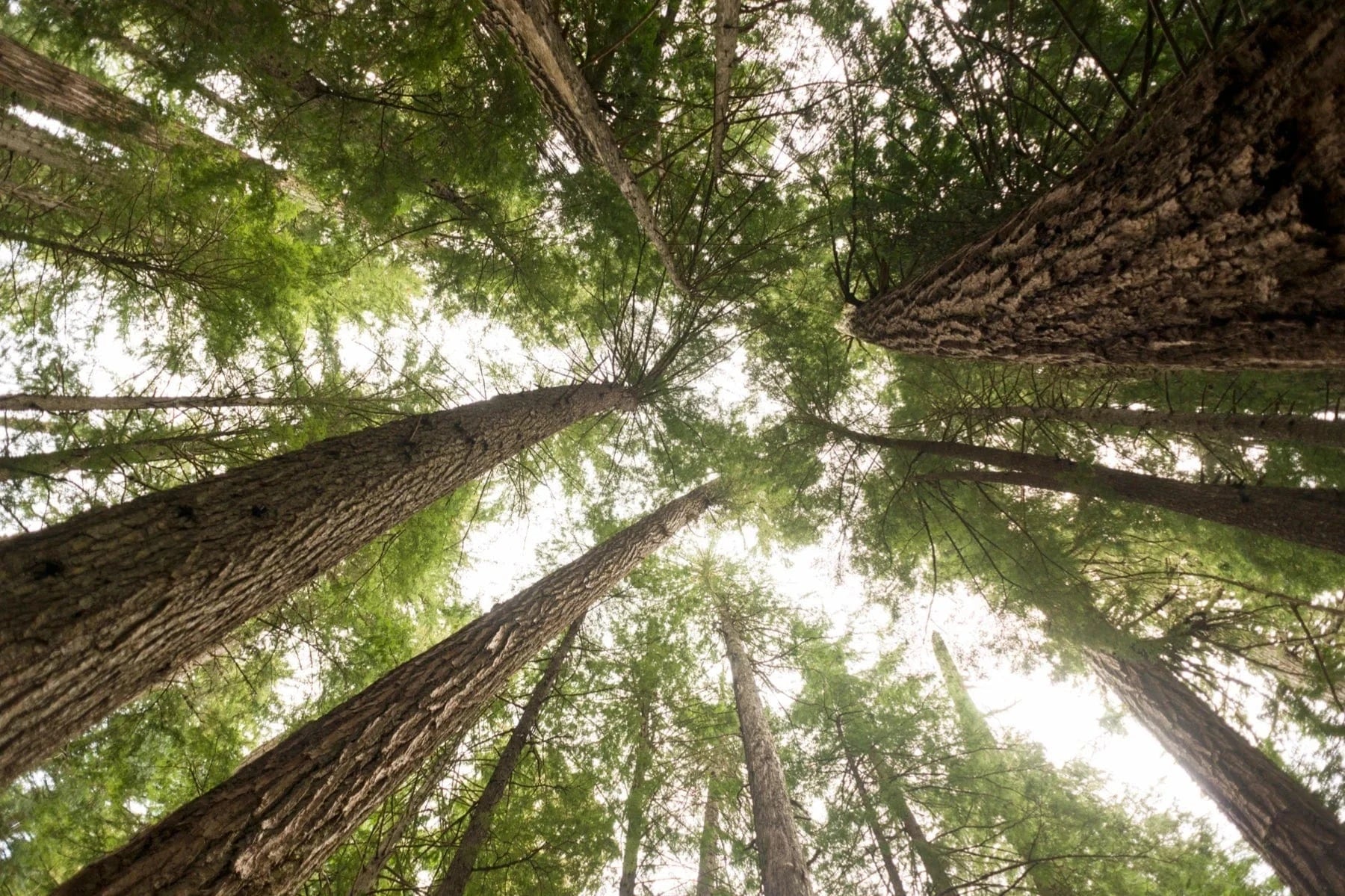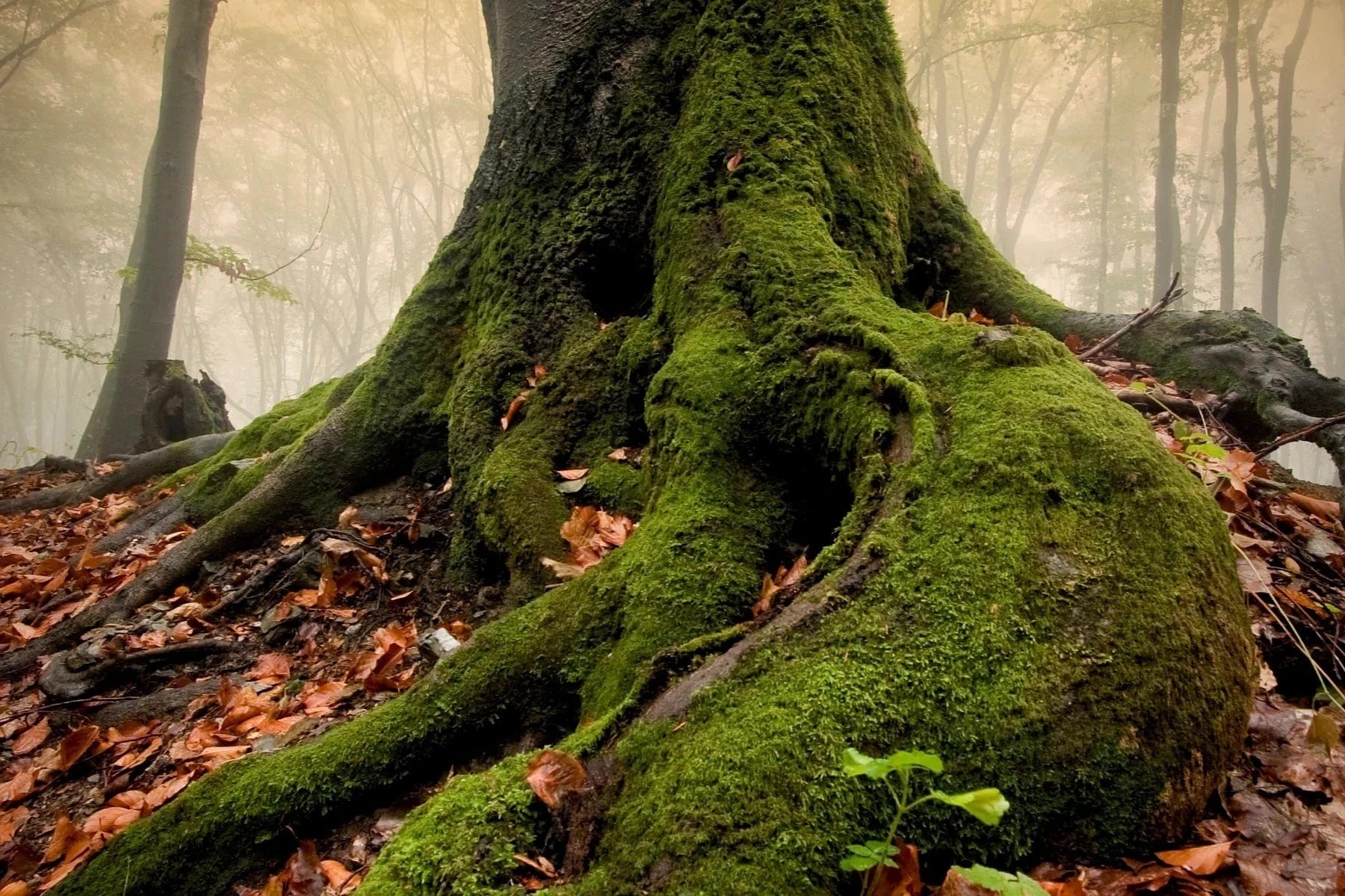
Get news, updates, & event Info delivered right to your inbox:
How Trees Communicate with Each Other
The whisper-soft rustling of leaves, the creaking of branches, the slow, groaning shift of trunks in the wind; sometimes it feels as if the forest is engaged in a secret conversation. And while trees speaking might sound like something straight out of the Lord of the Rings, research from scientists like Dr. Suzanne Simard and Peter Wohlleben has proven that trees do communicate.
Ready to Dive into the Secret Life of Tree Communities? Watch "How do Trees Communicate"
Forests Are More Than Just a Collection of Trees
Trees are fascinating, and there’s much more to them than meets the eye. Decades of scientific research has confirmed what early humans instinctually knew: forest trees are engaged in whispered conversations, working together to grow and flourish in a world where change is the only constant.
That’s right: contrary to Darwinian wisdom, trees are not selfish individuals forever battling to claim a piece of the sky. Instead, think of them as members of an ancient society connected via a vast and intricate network of hair-thin fungal filaments called mycorrhiza — all just a few inches beneath the soil surface.
In fact, by analyzing the DNA in root tips and tracing the movement of molecules through underground conduits, Professor of Forest Ecology Dr. Suzanne Simard has discovered that in a healthy forest, these tiny fungal threads link the roots of nearly every tree — and that “one teaspoon of forest soil contains several miles of fungal filaments.”

Trees Communicate Without Words
There’s plenty of competition in forests, but there’s also negotiation, reciprocity, and even altruism. And not just between members of the same species: scientists have found that certain trees — especially conifers and deciduous tree species like Douglas fir and paper birch — will form mutually beneficial associations. Through these networks, trees can send chemical, hormonal and even slow-pulsing electrical signals, which scientists are only just beginning to interpret.
Edward Farmer at the University of Lausanne in Switzerland studies these electrical pulses and has identified a voltage-based signaling system bearing a striking resemblance to animal nervous systems. Although the accepted knowledge is that plants don’t have neurons or brains, it’s clear that even without nervous systems, trees on some level know what’s happening and even feel something akin to pain: when one is cut, it emits electrical signals and healing compounds — similar to how our own bodies respond to wounds.
One example of this is when pine trees are cut or wounded, they send sap to the affected area to seal it off and begin the healing process. Pine sap contains antiseptic, anti inflammatory compounds.
Monica Gagliano at the University of Western Australia has gathered evidence that some plants may also emit and detect sounds, in particular a crackling noise in their roots at a frequency of 220 hertz. Other findings have suggested that roots grow toward the sound of running water and that certain flowering plants sweeten their nectar when they detect a bee’s wing beats.

Sending Danger Signals
Trees also communicate through airborne compounds, using pheromones and other powerful scent signals to warn each other of danger. In one stunning example, the wide-crowned umbrella thorn acacia, which happens to be a favorite food of giraffes, has developed a unique survival technique. When a giraffe begins chewing acacia leaves, the injured tree emits a distress signal using ethylene gas. Neighboring acacia trees pick up on this and begin pumping tannins into their leaves. When consumed in large quantities, these tannins can sicken or even kill giraffes.
But the system certainly isn't foolproof: since giraffes have evolved with acacia trees, they know to eat facing the wind so the warning gas won’t reach the next cluster of trees. Absent wind, they’ll simply travel beyond the reach of ethylene gas (around 100 yards) to avoid the tannins.
Trees can also "smell" scents through their leaves, and "taste" danger. When elm trees and pine trees come under attack by leaf-eating caterpillars, for example, they detect the caterpillar saliva and release pheromones that attract parasitic wasps, a natural predator of caterpillars.

Mother Trees Support Their Offspring
Although alarm and distress seem to be the main reasons trees communicate, these networks allow them to do more than just warn each other of danger. The healthiest trees growing in the best conditions are able to share life-saving nutrients with their less fortunate friends, keeping each other alive — sometimes against all odds.
For young saplings in a fully shaded area of forest, for example, this network is literally a lifeline. Larger, older trees (often Mother Trees) pump sugar, water and other lifesaving resources like carbon, nitrogen and phosphorus toward their growing roots.
They’ll even increase their flow of sharing in response to distress signals from neighboring trees. Professor Simard’s research shows that mother trees are a vital defense against threats big and small, and that when the biggest, oldest trees are cut down in a forest, younger trees nearby are less likely to survive.
Simard’s research has found that mother trees act as hubs, and that the bigger and older a tree is, the more connections it has — sometimes hundreds! These Mother Trees seem to recognize their own kin, colonizing them with bigger mycorrhizal networks, sending them more carbon and other nutrients, and even reducing their own root competition to make elbow room for their “kids”.
Their presence increases the survival of the entire network‚ and when too many are cut down, entire tree networks can collapse. When they’re injured and dying, they’ll send a substantial share of their carbon to the next generation of seedlings. It’s clear: without Mother Trees, many seedlings and forest trees simply wouldn’t make it.
But trees don't just help their young — in some cases, they’ll also keep a remnant of their elders alive for hundreds of years after they’ve been felled. Bestselling author and forester Peter Wohlleben speculates that they’re “reluctant to abandon their dead, especially when it’s a big, old, revered matriarch.” This suggests that Mother Trees are highly valued in forest societies, and are remembered long after they've gone.

Trees and Fungi Look Out For Each Other
All of this is made possible by the incredible mutualistic fungi that act like an extension of each tree’s root system. In addition to exchanging nutrients, the fungi are able to explore the soil by growing into tiny crevices and accessing nutrients that would otherwise be unavailable to the tree.
What’s in it for the fungi? Well, they’re not performing this service for free — you might even say they charge a fee, as they consume around 30% of the carbon-rich sugar that trees photosynthesize from sunlight. This sugar is their fuel and allows them to scavenge the soil for nitrogen, phosphorus and other mineral nutrients trees need. In short: working together with trees allows the fungus to secure its own livelihood with a steady source of food and carbon dioxide.
As you can see, forests are so much more than just a collection of trees. And while we have the feeling humanity has only discovered the tip of the iceberg when it comes to forests, the verdict is clear: connected forests are more resilient, heathy, diverse, and able to stand the test of time. In that way, they’re more like us than we might think. Feeling inspired? Plant trees with us today!
Get news, updates, & event Info delivered right to your inbox:
Related Posts
9 Sustainable New Years Resolutions
18/12/2025 by Meaghan Weeden
Inspirational Quotes About Trees
16/12/2025 by Meaghan Weeden
The 9 Oldest, Tallest, and Biggest Trees in the World
11/12/2025 by One Tree Planted
Popular On One Tree Planted
Inspirational Quotes About Trees
16/12/2025 by Meaghan Weeden
The 9 Oldest, Tallest, and Biggest Trees in the World
11/12/2025 by One Tree Planted
What Causes Deforestation?
10/07/2025 by Meaghan Weeden
Fundraising Disclosures

Be Part of the
Restoration Movement
The Grove is more than just a monthly giving program: it's a vibrant community of individuals who are dedicated to reforestation and environmental restoration on a global scale.
As a member of The Grove, you affirm your commitment to restoring forests, nurturing biodiversity, and fostering positive global change.



